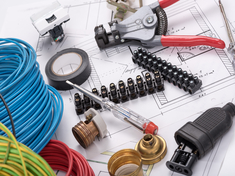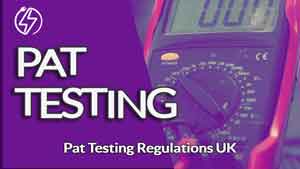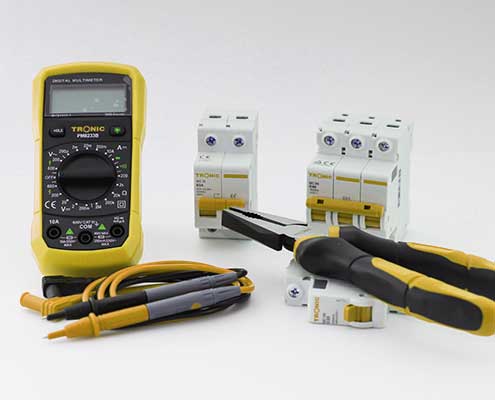PAT Testing UK
What is the legal requirement for PAT testing?
If you’re a business owner, you may be wondering if PAT Testing is a legal requirement and what are the PAT Testing Regulations. This guide will explain the regulations surrounding PAT Testing and why it may be necessary to comply in order to keep your business running safely.
What is PAT Testing?
PAT Testing (or Portable Appliance Testing) is an essential safety procedure that businesses must do to ensure all electrical equipment is safe for staff and customers. This includes inspecting, testing and maintaining your electrical appliances regularly in accordance with the Electrical Equipment (Safety) Regulations 1994. PAT Testing ensures that any faults or damage can be quickly identified and rectified, which could prevent serious injury or even death.
Understanding PAT Testing Rules and Regulations
Portable Appliances Testing comes with testing regulations. This is to ensure that electrical items and appliances are checked regularly for safety. While this is usually referred to as PAT testing, its official name is actually “service inspection and electrical equipment testing”. So what are the PAT testing regulations?
The UK has its own PAT testing rules and regulations. Therefore while there is no absolute legal requirements for the PAT testing, the UK government does have certain laws in place. Furthermore that help to keep businesses and people safe. In order to fulfil these health and safety requirements for your workplace or office, you will be required to perform PAT testing for commercial settings.
In addition, all HMO landlords need to conduct PAT testing annually for their electrical appliances. Private firms currently have no exact requirements for testing on their properties. (See also ‘Electrical Regulations for Landlords’)
By ensuring your follow the guidelines of PAT Testing your electrical equipment are then safe and protected. Furthermore safe to use for yourself and any employees
With the health and safety Act of 1974, PAT testing regulations were enacted to make sure that all companies were compliant. In addition, the Electrical Work Regulations of 1989 and the Supply and Use of Work Equipment of 1998 also put into place regulations. Another health and safety regulation is the Regulation on health and safety management of 1999.
The PAT test uses test equipment to protect against damage and to ensure that these items perform properly. In addition this helps keep you and your business in line with current laws and ensure the safety and security of your portable appliances.
UK PAT Testing Regulations
According to the PAT Testing Act, all homeowners, employers, and self-employed individuals need to make sure that their movable electrical equipment is safe and maintained in a decent working order.
To keep your portable electrical equipment in working order, you must ensure that it gets regular maintenance. Furthermore that is also regularly inspected. This can be achieved through periodic testing. The continual usage of electrical equipment causes wear and tear over time. Thus resulting in defects and damage. Regular testing can ensure these items safety.
PAT is tested on all appliances that are considered “moveable” to make sure the are safe and secure for use. Based on regulations, any proficient person is capable of performing PAT testing. However, a more experiences PAT tester should conduct visual tests for each device.
When Should PAT Testing Be Carried Out?
As a business owner, it is important to stay up to date with PAT Testing regulations. Generally, all portable electrical appliances should be PAT Tested every 12 months and if the equipment has undergone significant changes since it was last tested then this should be done earlier. All transformers, motors and cabling must also be regularly inspected and tested in accordance with the manufacturer’s instructions. Additionally, any electrical equipment that is moved more frequently than once a month should also be tested monthly.
Are Businesses Required to Have PAT Tests?
Yes, businesses are typically required to have PAT Tests done in accordance with the requirements of the Health and Safety Executive (HSE). This includes any business that uses portable electrical appliances that have the potential for risk of electric shock or fire. Failure to comply with these regulations may result in fines and other penalties.
Why Do Businesses Need to Comply with PAT Testing Regulations?
Businesses need to comply with PAT Testing regulations to protect the safety of employees and customers. Portable Appliance Tests assess the condition and safety of electrical appliances. This includes testing for any potential risks such as electrical shocks or fire hazards, and ensuring that all appliances meet the necessary safety standards. By conducting regular PAT Tests, businesses can help reduce any potential safety risks present in the workplace.
How Can Businesses Ensure Compliance With PAT Testing Regulations?
Business owners can ensure their compliance with PAT Testing regulations by scheduling regular testing and maintenance of electrical appliances. This includes making sure that all test results are logged correctly and reviewing any changes in industry standards or new health and safety guidelines. Additionally, businesses should make sure to keep up to date with any applicable laws and industry recommendations. Providing regular training for staff on electrical safety measures is also advised to ensure compliance.
Who are authorized people to conduct PAT testing?
An authorized person to conduct PAT testing is anyone who has experience or familiarity of being capable to test and check equipment for safety purposes. This generally includes any person that has a decent knowledge of electricity or someone who has experience with doing actual electrical work. These people are generally considered to be qualified to do the work necessary to complete a PAT test.
Employers, property owners, and commercial people need to ensure they complete the proper regulations and have an authorized person conduct the PAT testing needed on their equipment. One of our numerous offers is PAT testing, and the testing can be done by various PAT testing methods.
When you get a PAT testing certification it does not have a specific expiration date. So, how often you will have PAT testing conducted will depend on a variety of factors. We generally recommend that you complete the PAT testing after every 2 years. This includes being done every two years if you own or run a hotel, shop, or workplace office. Every 4 years, you should have stationery and IT appliances checked for a new certificate.
The HSE website covers this is great detail here https://www.hse.gov.uk/electricity/faq-portable-appliance-testing.htm
How much does PAT testing cost?
The price quote for your PAT test depends on a number of factors. For our purposes here, we will discuss the general typical price for PAT testing across the UK. Different factors such as the number of appliances being tested, the work environment, and the travel to conduct the PAT testing also all factor into the cost. However, the main factor is how many appliances require testing.
Some items could cost as little as 70 -80p for each item to get tested. If, for example, you have hundreds of items to be tested for your commercial space or business, you will generally pay this lower cost. However, if you have fewer items to be tested you may need to pay £1.00 to £2.00 or more for each item.
In addition, the charges for building sites and industrial environments could be increased. Other factors, such as hard to reach outlets such as built in desks, can also increase the cost of PAT testing.
How do I get expert PAT services?
PAT testing is an important service that makes sure your electronic gadgets completely fulfill the UK Health and Safety guidelines.
If you are a business owner or self-employed, it is your responsibility to make sure that your workplace equipment is in compliance with UK laws and regulations.
This is easily done with PAT testing, which is fast, cost-effective, and efficient. This will give you peace of mind knowing that all your equipment is safe.
As an added bonus, some insurance companies may lower your premiums if you have a PAT test completed because it can act as risk aid assessment.
When do PAT tests need to occur?
Our general rule of thumb is that PAT testing is completed every 2 years on average, although this can vary. How often you need to have a PAT test completed depends on the condition of the appliance, the frequency of use, the age of the appliance, as well as other factors.
Which appliances need PAT testing?
Any moveable or portable appliance generally needs PAT testing. A movable appliance is generally considered to be an appliance that has flexible cable or wire to connect to the power supply. PAT testing helps to prevent fired hazards, which could occur if you do not get your appliance PAT tested. When you get your portable appliance PAT tested, you know that it will be safe and secure.
Who is authorized to conduct a PAT test?
Any competent and proficient professional can conduct a PAT test. A competent and proficient professional is generally considered someone who has experience and knowledge of electricity. You can take a test to achieve proficiency in PAT testing, or you can hire a qualified professional through an electricity company.
To know if the person conducting your PAT test is a competent professional, they must have:
- Electrical work experience
- Proper knowledge of electricity
- Practical experience working with electrical systems
- A sufficient understanding of the system
- The ability to know when it is safe to move forward
- Knowledge of the dangers surrounding electrical appliances
- Understanding of necessary safety precautions
When you hire a professional from an electrical company, you can know that they are qualified to conduct your PAT testing and keep your business safe.
- What is EICR?
- Electrical Regulations for Landlords
- Electrical Testing
- View the video on PAT Testing Regulations UK
For additional electrical articles please visit our main BLOG page here















